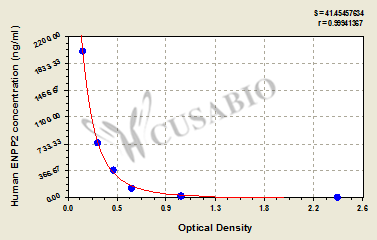The product CSB-EL007680HU is a sandwich ELISA kit developed to measure concentrations of human ENPP2 in serum, plasma, or tissue homogenates. This assay uses the competitive technique in combination with the enzyme-substrate chromogenic reaction to quantify the analyte in the sample. The color develops negatively to the amount of ENPP2 in samples. The color intensity is measured at 450 nm via a microplate reader.
ENPP2, also known as autotaxin (ATX), is an enzyme present in blood circulation that is responsible for the conversion of lysophosphatidylcholine (LPC) to lysophosphatidic acid (LPA). LPA is a phospholipid mediator that elicits growth-factor-like responses in almost all cell types, including cell growth, survival, differentiation, and motility. ENPP2/LPA promotes several physiological and pathological processes, including in pulmonary fibrosis, thus serving as attractive drug targets. Increased ENPP2 expression has been detected in various types of cancer, including mammary, thyroid, hepatocellular, and renal cell carcinomas, non-small-cell lung cancer, as well as glioblastoma and neuroblastoma.




